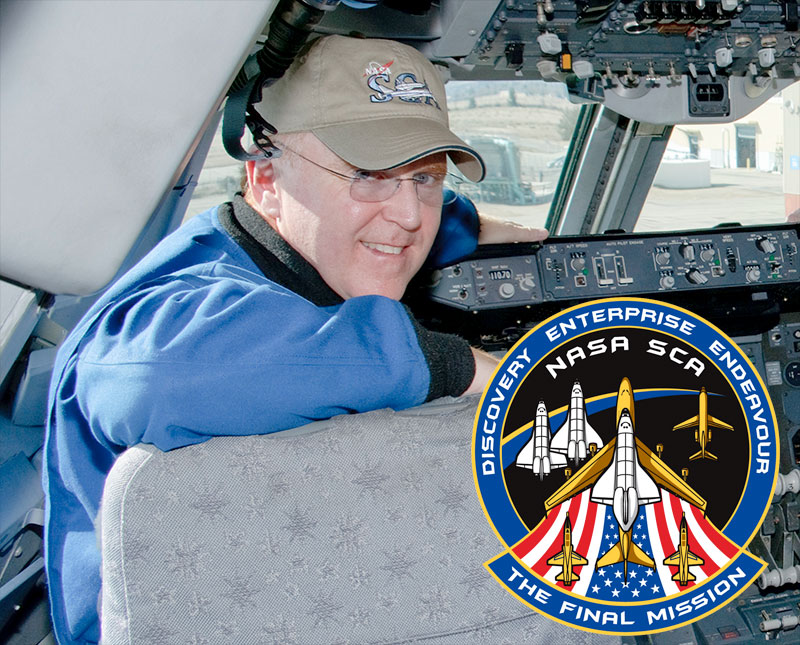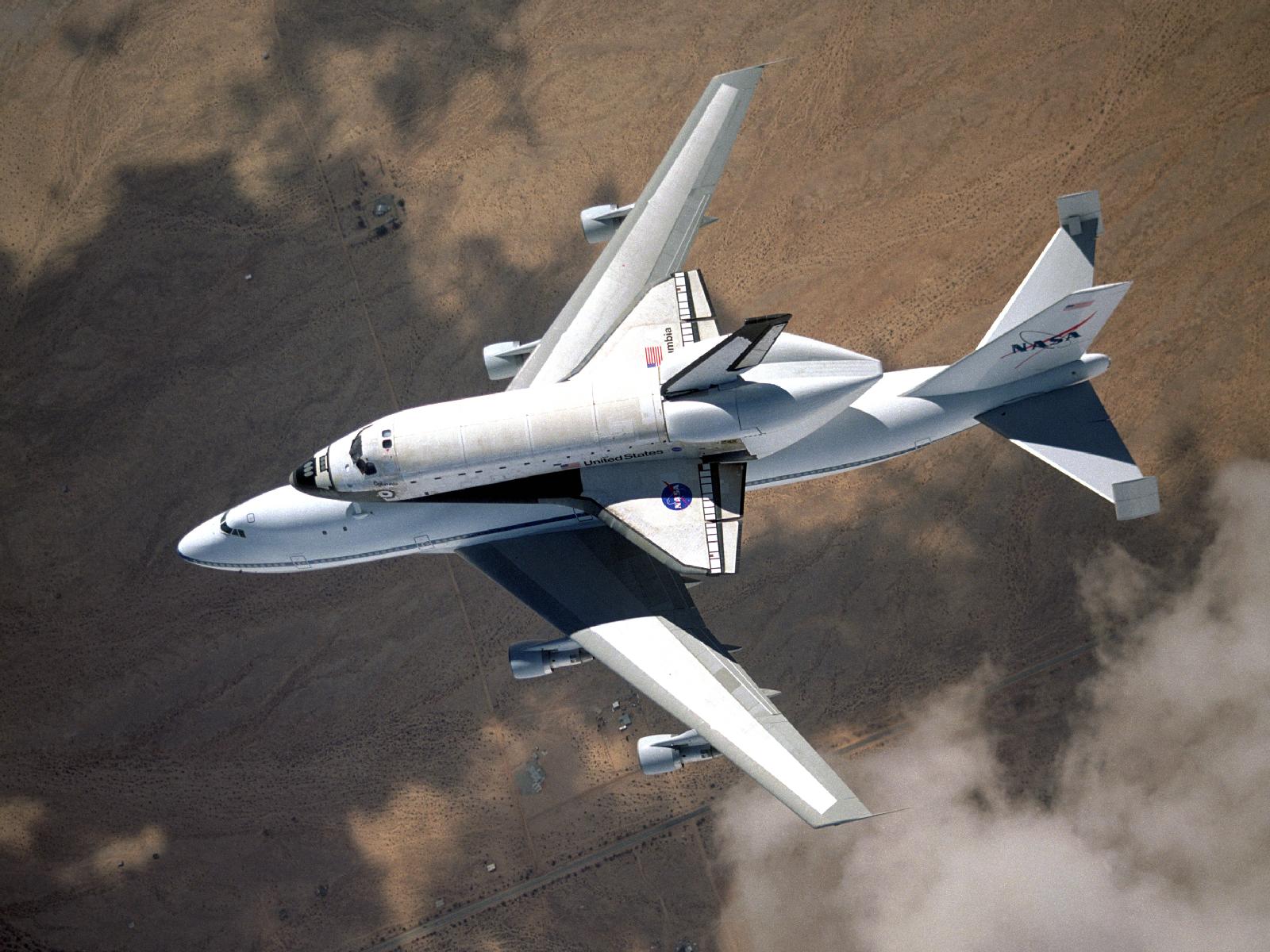Space Shuttle Museum Delivery Flights Get 'Final Mission' Patch

CAPE CANAVERAL, Fla. — It may not be heading back into space and its crew members aren't astronauts, but space shuttle Discovery's final flight has its own mission patch.
The emblem, which was shared with collectSPACE.com, was designed by the captain of the modified Boeing 747 jumbo jet that will fly Discovery to Washington, D.C. next week. It will also serve as the official insignia for the similar deliveries of orbiters Enterprise and Endeavour later this month and year, respectively.
"We do have a crew patch for this series of missions," Shuttle Carrier Aircraft (SCA) chief pilot Jeff Moultrie told collectSPACE. "There's an approved NASA patch that we are going to be using for all three shuttle ferries."
Moultrie, together with fellow pilot Bill Rieke and a crew of flight engineers, are scheduled to fly Discovery, mounted atop the 747, to Washington, D.C. on Tuesday (April 17), weather permitting. Landing at Dulles International Airport, the orbiter will then be offloaded by crane and towed to the Smithsonian National Air and Space Museum's Steven F. Udvar-Hazy Center for its permanent display.
A week later, the same flight crew will fly the test shuttle Enterprise, which had been on display at the Udvar-Hazy Center since 2003, to New York. Then in September, the 747 will leave on its final ferry flight carrying Endeavour to Los Angeles for the California Science Center. [How NASA Flies Shuttles on 747 Jets (Photos)]
The flight crew's patch, which mimics in style the mission emblems that represented the shuttle program's 135 trips into Earth orbit, will fly on each of the museum deliveries.
"We will have them to fly on the airplane and we will all be wearing them," Moultrie said, adding he expected to first see the embroidered patches Friday (April 13).
Breaking space news, the latest updates on rocket launches, skywatching events and more!
'The Final Mission'
Moultrie came up with the idea for the design of the patch, taking input from his crew members, and then worked with NASA artist Cindy Bush at the Johnson Space Center in Houston to finalize the insignia for flight.
The emblem's artwork incorporates the three shuttles and three different types of aircraft that will take part in the ferry flights, including the SCA, known by its tail number NASA 905. [Video: End of the Shuttle Ferry Flight Era]
"It has all three orbiters names on there, has the American flag, and has the shuttle up on top of NASA 905," Rieke described. "We also have the C-9 Pathfinder on there and T-38s, which will be our videography craft flying with us."
The aircraft, including the pair of T-38 trainer jets, the C-9 Pathfinder that will fly ahead of the SCA, and the 747, are rendered in gold on the patch.
The three orbiters are represented in their iconic black and white, with one mounted on the SCA. The shuttle names, Discovery, Enterprise and Endeavour, are inscribed along the top border of the patch in the order they will be ferried to museums.
The phrase "The Final Mission" is inscribed along a tab on the bottom of the emblem.
"I think it looks really, really good," Rieke said.
Dryden designs
While Moultrie's mission patch is the only official emblem for the ferry flights, it's not the only NASA patch produced for the shuttles' museum deliveries.
Dryden Flight Research Center photographer Tony Landis, who designed the mission markings added to NASA 905's fuselage prior to its final flights, was also behind a logo for the team working on the orbiters' transition and retirement. He also designed a set of three patches for Discovery's, Enterprise's and Endeavour's museum delivery flights.
Landis' "Orbiters On Display" logo, which has appeared on NASA internal documents, technicians' safety vests, lapel pins and souvenir medallions, adapted the original Space Transportation System (STS) program logo used since the late 1970s.
The triangular, blue and gold emblem originally featured a full shuttle stack, including two solid rocket boosters and external tank. The "Orbiters On Display" logo retained the orbiter but added a scene depicting the shuttle atop of the SCA being hoisted by cranes to either side of the aircraft.
Landis' trio of ferry flight patches will also fly on the SCA, but won't be worn by the flight crew.
First limited to 300 sets but due to popular demand further extended to 700, the patches each feature the orbiter-SCA combination in flight.
Discovery's patch art features the Capitol Building, Lincoln Memorial and the Washington Monument, as well as the Smithsonian National Air and Space Museum and Donald D. Engen Tower at its Steven F. Udvar-Hazy Center where the shuttle will go on display.
Enterprise's patch adapts the same design and colors as the 1977 Approach and Landing Test program logo, which first paired a shuttle with the SCA.
And Endeavour's patch features an overhead view of the shuttle riding piggyback atop the 747 as they soar into the sunset, completing 90 shuttle ferry missions over the past 35 years.
Visit shuttles.collectspace.com for continuing coverage of the delivery and display of NASA's retired space shuttles.
Follow collectSPACE on Facebook and Twitter @collectSPACE and editor Robert Pearlman @robertpearlman. Copyright 2012 collectSPACE.com. All rights reserved.

Robert Pearlman is a space historian, journalist and the founder and editor of collectSPACE.com, a daily news publication and community devoted to space history with a particular focus on how and where space exploration intersects with pop culture. Pearlman is also a contributing writer for Space.com and co-author of "Space Stations: The Art, Science, and Reality of Working in Space” published by Smithsonian Books in 2018.
In 2009, he was inducted into the U.S. Space Camp Hall of Fame in Huntsville, Alabama. In 2021, he was honored by the American Astronautical Society with the Ordway Award for Sustained Excellence in Spaceflight History. In 2023, the National Space Club Florida Committee recognized Pearlman with the Kolcum News and Communications Award for excellence in telling the space story along the Space Coast and throughout the world.


